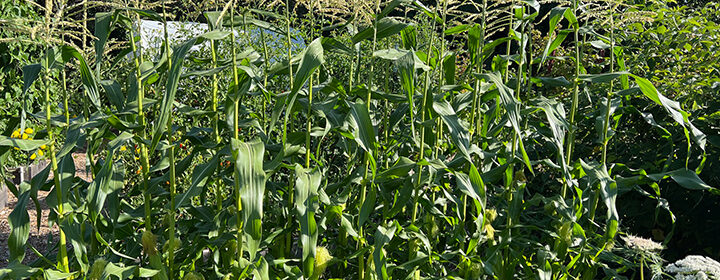Video: Crop Rotation for Home Gardens

Chances are, you’ve heard of the concept of crop rotation but thought it was only for farmers. But it’s actually a mindful practice that benefits home gardens in three important ways.
- It makes sure different crops have the right nutrients in order to grow.
- It’s a great way to reduce the instances of harmful insect pests.
- This method can also reduce problems with plant diseases.
Because of this, I felt it was the perfect topic for this week’s video. No matter what size your garden is, you can still implement this method to keep your garden healthy and productive. And that’s what we all want, right?
I give plenty of examples of how I apply crop rotation principles in our vegetable garden. We have 28 raised beds. I know, that’s a lot! Yet it’s really easy to stay on top of what’s growing in each bed. In the video, you’ll see the bed layout template that I use each year. It can be a bit crazy to get everything sorted out but it’s definitely worth my time.
When it comes to insect problems, it really helps to know their life cycles. I mentioned leafminers and root maggots in the video. Let’s do a deep dive on them here:
Leafminers
The pupal stage of leafminers overwinter in the soil. In the spring, they emerge as flies and lay eggs to start the cycle all over again. Their host plants are beets, spinach and Swiss chard. If you were to grow those crops in the same bed the next year, they can easily cause the same damage. I always plant those crops in a different bed the next year, plus I cover them with agricultural insect netting. That way, the flies can’t get to the plants or the soil in the bed. And that’s an example of how crop rotation can help you out.
Root maggots
There are all kinds of root maggots but I’m focusing on the ones that cause damage to vegetable crops. This includes beets, cabbage family crops, carrots, parsnips, and onion family crops. The pupal stage overwinters in the soil and emerge as adults in the spring. Those adult flies lay eggs in cracks within the soil around their host plants.
I always move the above crops to new beds each year. And since none of those crops needs to be pollinated, I cover them with floating row cover or insect netting. I definitely don’t want to keep them in the same bed because I don’t want the same problem to happen again.
In this video, I mentioned my books, The Vegetable Garden Pest Handbook and The Vegetable Garden Problem Solver Handbook. If you’re looking for a super easy-to-use insect guide, the Pest Handbook is exactly what you need. I wrote it because I couldn’t find any helpful insect books for home vegetable gardeners. If you don’t know much about vegetable plant diseases, you’re not alone! And that’s why I wrote the Problem Solver Handbook. Both of these books are in my Amazon Store in the “Susan’s Books” category. (As an Amazon Associate, I earn a commission from qualifying purchases but that won’t impact the price you pay.)
Here’s my video on crop rotation:
I hope my explanation of crop rotation was helpful and gave you ideas for incorporating it into your garden. It’s totally worth it!
Did you enjoy this video? I have over gardening 600 videos on my YouTube channel. I also have a Vegetable Gardening Videos playlist so you can pick and choose videos on this topic.

